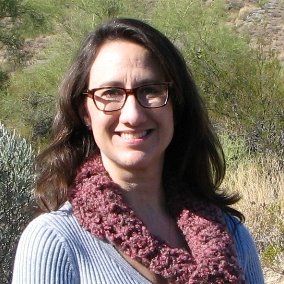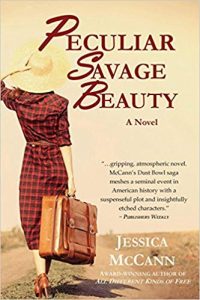Drawing Novel Ideas from the Dust
 Novelists are often asked how they find ideas. Frankly, the ideas usually often find us. That’s the short, smart-alecky answer nobody wants to hear, but it’s hard to provide more detail to such a broad question. Since the release of my second historical novel, Peculiar Savage Beauty, many readers have asked specifically how the idea for Woody’s window dust paintings came to me. That’s a little easier to answer.
Novelists are often asked how they find ideas. Frankly, the ideas usually often find us. That’s the short, smart-alecky answer nobody wants to hear, but it’s hard to provide more detail to such a broad question. Since the release of my second historical novel, Peculiar Savage Beauty, many readers have asked specifically how the idea for Woody’s window dust paintings came to me. That’s a little easier to answer.
As with most of the ideas that take shape in my novels, this was an amalgamation of several elements that seemed to throw themselves in my writing path in the six years it took me to write the book.
Peculiar Savage Beauty is the story of a headstrong and fiercely independent young woman who charges into the heart of the wind- and drought-ravaged Great Plains in the 1930s, intent on battling the dust and healing the land. As a geologist working for the U.S. government, Rosa Jean “RJ” Evans must find her place in a small farming town that welcomes neither a woman in authority nor changes to their way of life. Inspired by historical events during the Great Depression and Dust Bowl environmental disaster, Peculiar Savage Beauty is a parable about man’s quest to dominate the land and nature’s refusal to be conquered, about unlikely alliances and unexpected love.
My Dust Bowl research began years ago with a documentary titled “Black Blizzard.” I had been clicking through the television channels, when it popped up on the screen. It was gripping. The idea of living through such brutal dust storms intrigued me. Motivated by the vague potential of writing a novel based on such an experience, I eventually watched more documentaries, read numerous books and studied hundreds of historic photos. Images of rolling sand dunes and layers of dust were etched in my mind. They were terrifying and, oddly, beautiful.
All my research led me to formulate a story about environmental disaster and hard economic times. A theme began to develop around human nature and overcoming personal tragedy. At the heart of it all would be a strong female protagonist – a young woman with a great deal she could teach, as well as a great deal to learn.
Many months later, a video by sand artist Ilana Yahav appeared in my social media feed (most likely because of my countless Google searches containing the words dust and sand). Yahav told the story of “One Man’s Dream” through performance art with evolving scenes created in sand on a light table. I was mesmerized. (See the video here) After watching several more of Yahav’s videos, I knew my novel-in-progress would involve some sort of sand art. How, exactly, that would take shape still was not clear to me.
The final aha moment came when my son came home from school with an etching he had made on black paper. His high school art teacher, Mr. Tubb, had introduced us both to something new. Scratchboard. Once again, the Internet provided me with a visual – a tutorial of this new-to-me art form. And just like that, I could picture one of my novel characters etching beautiful images on ugly, dust-covered windows. (Watch a scratchboard art tutorial here🙂
In the novel’s earliest iterations, it had no elements of art. I struggled to formulate a way to incorporate it. Woody also did not yet exist. He made his first appearance as a minor character about halfway through the first draft. He was originally intended to simply be one of several quirky town’s people my main character, RJ, would encounter. Almost without my knowing it, Woody began hanging out in more and more scenes. He was a compelling character, I finally realized, someone who deserved more attention. It sounds flakey, I know. But this is sometimes how a story takes shape. Unexpectedly.
A rough outline and more than half the novel already had been written. It was hard to abandon all that. Still, I started anew, without an outline, on a novel featuring Woody as a main character – as a brilliant though misunderstood young man, as an artist of sorts. The novel then had three main characters. The evolution of their friendships became the crux of the story. It was at that point that events and scenes began to really flow from my mind to the page. It was at that point I knew the pain of starting over again had been worth it.
Sometime during final copyedits, I stumbled upon a “Dirty Car Guy” article online. (Thanks once again to the mixed blessing of search engines, cookies and target marketing.) Scott Wade travels the world etching remarkably detailed pictures on dirty cars and windows. I was dumbstruck at how close his artwork came to what I had been picturing in my mind’s eye for years. (Watch Wade’s official video)
The final draft of Peculiar Savage Beauty is far different than the story I had initially set out to write. Thank goodness for that. In my experience, the key to success as a novelist is not so much in finding the right ideas, but in allowing time for the right ideas to find you.
###
Jessica McCann is a published historical novelist and frequent speaker/presenter at writers’ conferences and book-related events. She worked for 30 years as a professional freelance writer for magazines, universities, corporations and other organizations. One of her earliest assignments as a freelancer was covering a new surgical radiation technique for destroying brain tumors, during which she was permitted to don scrubs and observe inside the operating room. McCann lives in Phoenix with her family. She enjoys interacting with fellow writers and readers on her website at www.jessicamccann.com and on social media. Twitter @JMcCannWriter and Facebook @JessicaMcCannNovelist
About PECULIAR SAVAGE BEAUTY
 “… gripping, atmospheric novel. McCann’sDust Bowl saga meshes a seminal event in American history with a suspenseful plot and insightfully etched characters.” – Publishers Weekly
“… gripping, atmospheric novel. McCann’sDust Bowl saga meshes a seminal event in American history with a suspenseful plot and insightfully etched characters.” – Publishers Weekly
“McCann has crafted an unforgettable novel.” — Booklist
Peculiar Savage Beauty is the story of a headstrong and fiercely independent young woman who charges into the heart of the wind- and drought-ravaged Great Plains in the 1930s, intent on battling the dust and healing the land. As a geologist working for the U.S. government, Rosa Jean “RJ” Evans must find her place in a small farming town that welcomes neither a woman in authority nor changes to their way of life.
Inspired by actual historical events during the Great Depression and Dust Bowl environmental disaster, Peculiar Savage Beauty is a parable about man’s quest to dominate the land and nature’s refusal to be conquered, about unlikely alliances and unexpected love.
Category: Contemporary Women Writers, On Writing































Dear Jessica MacAnn ,
Thank you so much for your kind and generous words.
I really appreciate it!
While reading I moved deeply.
I wish you an huge success.
Love
Ilana Yahav
Sand Artist
ilana@sandfantasy.com
Hi Ilani,
You are very welcome. I wish you great success with your beautiful art, too!
All my best,
Jessica